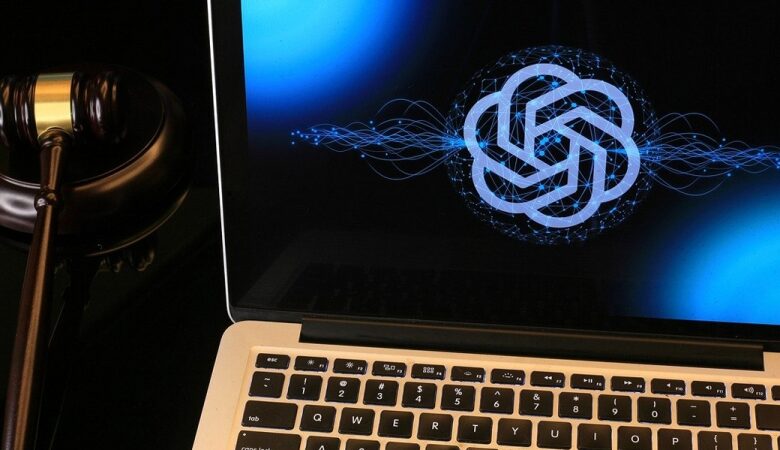How Artificial Intelligence Is Poised To Change Paranormal Research

These concerns are not unfounded, as AI could already be used to create highly convincing fake audio recordings, videos, and photographs. It should be remembered, however, that people have been faking paranormal evidence for decades through hoaxes, double-exposure photographs, CGI, and Photoshop manipulation.
However, this underhanded use of AI is only one side of the coin. While the potential for misuse exists, AI also offers new opportunities for advancing paranormal research. Instead of dismissing AI as a threat, it’s worth exploring how this technology can be harnessed to enhance objectivity, efficiency, and reliability in investigations. Much like its application in the medical field for analysing X-ray images, AI has the potential to transform the way paranormal evidence is examined, reducing subjectivity and highlighting data that warrants further scrutiny.
Unlike human investigators, who may have differing opinions on what constitutes valid evidence, AI applies the knowledge from its training data uniformly to all evidence presented. This standardisation ensures that all evidence is assessed equally, regardless of who is conducting the investigation or where it takes place. This would bring a level of objectivity and precision to the field that, until now, has been reliant on subjective interpretations made by individual researchers.
Another benefit is that AI can process vast amounts of data at speeds far exceeding human capability, identifying potential points of interest for further review.
In the medical field, AI performs a similar task. Instead of looking for evidence of ghosts in the data obtained from investigations, it looks for evidence of medical issues in X-ray images. These AI systems are trained using thousands of images, enabling them to recognise patterns and anomalies that may be invisible to the human eye. A recent study by King’s College London concluded that AI trained on X-rays can diagnose medical issues as accurately as doctors.
If well-trained AI is effective at detecting abnormalities with the same level of precision as medical professionals, then there’s no reason why it can’t spot signs of ghostly goings on. AI models can be trained with vast amounts of data, including audio clips, photographs, and video recordings from reputed haunted locations. Over time, these systems learn to distinguish between common environmental factors, such as wind or electrical interference, and anomalies that might indicate paranormal activity.
This approach does not remove the human element from paranormal research but empowers humans to do more. Investigators can use AI as a tool to churn through hours of mostly mundane recordings to uncover the most compelling moments of potential evidence that the human investigator should focus their attention on.
There are a few areas of paranormal research in which AI would be especially useful, including analysing electronic voice phenomena (EVP) recordings, video footage, and photographs.
AI can be trained to differentiate between various sounds and patterns in order to sift through hours of audio recordings, highlighting segments that contain potential voices or unexplained sounds. This not only saves investigators considerable time but also reduces the risk of human error or bias. The AI can flag these sounds without preconceptions, allowing researchers to review the potentially significant sections.
Video and photographic evidence can be hard to validate, with alleged paranormal occurrences often dismissed as tricks of light, shadows, or camera malfunctions. AI can assist by scrutinising video footage and images for anomalies that deviate from normal patterns.
A trained AI model can interpret and understand visual information in order to detect unusual movements, shapes, or light sources in the footage. For example, AI can analyse the consistency of orb movements, differentiating between dust particles, insects, and more anomalous movements that warrant further investigation.
AI could also help with identifying apparitions in photographs by comparing them against a vast database of images, recognising inconsistencies, and flagging anything that stands out. This method ensures that only the most unusual images are brought to the attention of researchers.
The key to getting AI to work effectively to aid ghost hunters is its training, because AI models are only as good as the data they are trained on. If the training data is not comprehensive or is biased, the AI could generate inaccurate interpretations or false positives. For example, an AI trained predominantly on data from haunted houses might misinterpret data captured in a haunted castle.
However, as investigators, we should be careful not to become too reliant on AI, and it shouldn’t replace human intuition, experience, and critical thinking. Paranormal investigations often involve interpreting subtle hints at paranormal goings on that AI may not fully comprehend. There is a danger that investigators might become too dependent on AI, neglecting their observational skills and the human elements crucial to understanding the paranormal.
As AI technology continues to evolve, it could pave the way for significant breakthroughs in the field, bringing us closer than ever to understanding the mysteries that lie beyond our current scientific grasp. Who knows? Perhaps one day, given enough raw data, AI will be able to predict when and where paranormal activity is most likely to occur based on historical trends.



